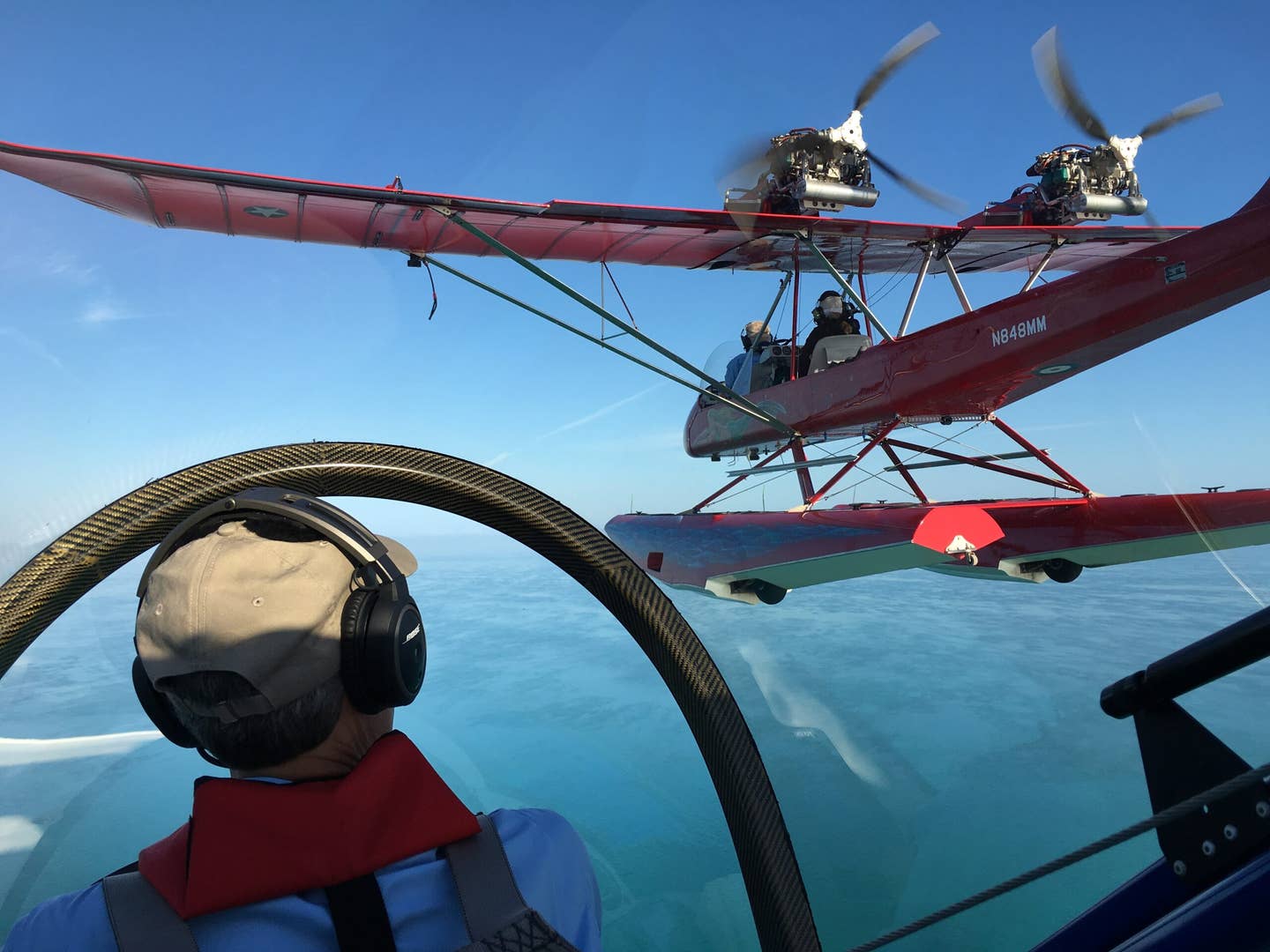Comments From Aviation Associations Take on Pros and Cons of MOSAIC
As the period closed on Monday, several signatories backed EAA’s take and the FAA must address the proposal in light of ongoing quality and oversight issues at Boeing.

With the comment period closed for the MOSAIC revamp of the light sport aircraft approval process, the FAA now faces the task of sifting through the recommendations. [Courtesy: Lockwood Aviation]
The sun has set on the opportunity for interested parties—including pilots, OEMs, and various aerospace representative associations—to give input on the Modernization of Special Airworthiness Certificates proposed rulemaking. Both the Experimental Aircraft Association, along with several signatories, and the General Aviation Manufacturers Association have presented extensive feedback on the proposal, along with a host of users from throughout the system.
As the comment period closed on January 22 for the MOSAIC revamp of the light sport aircraft approval process, several signatories backed EAA’s take—and the FAA must address the proposal in light of ongoing quality and oversight issues at Boeing.
EAA submitted its response Monday, cosigned by the Aircraft Owners and Pilots Association, National Business Aviation Association, and the National Air Transportation Association, with broad support of the measure, including several key areas to refine or expand.
“We support and strongly encourage the agency to commit the resources needed to continue to move this proposal forward and implement these changes,” said the consortium in the EAA statement. “Doing so will further enhance the safety, utility, and commercial viability of general aviation by fostering new aircraft designs and further stimulating the development of new technology.”
Those elements include:
- Removal of exclusions on aircraft class, expanding from the currently limited list of airplanes, gliders, powered parachutes, weight-shift control, and lighter-than-air, to add rotorcraft and powered lift and allow for new classes as technology advances
- Removal of the maximum takeoff weight of 1,320 pounds for land-based aircraft (1,430 for water-based aircraft)
- Raising the maximum level flight VH speed from 120 to 250 kcas
- Allowing for alternative powerplants, controllable pitch props, and retractable landing gear
- Raising the maximum stall speed VS1 from 45 to 54 kcas—in fact, the consortium would like to see a speed raised to 58 kcas or as high as 61 kcas
- Raising the maximum seating capacity from two to four seats, with the allowance for sport pilots to have up to three passengers
The final two items are apparently where the EAA/AOPA/NATA/NBAA consortium and GAMA diverge in some specifics, with GAMA opposing the allowance of a higher stall speed than 58 kcas, as well as the expansion of sport pilot privileges to allow for carrying up to 3 passengers.
FLYING reached out to GAMA for its comments, and they responded with the following statement, along with its general support for those submitted by EAA/AOPA/NATA/NBAA.
“GAMA supports the key aspects of the MOSAIC proposal to increase the size, performance and scope of aircraft that can be flown by sport pilots and issuance of a special airworthiness certificate in the light-sport aircraft category with the objective of improving safety, functionality, innovation, and availability of small general aviation aircraft. However, there are areas of the proposal regarding new and complex design and expanded operations of light-sport aircraft which are not fully supported by operational safety data alone and require additional consideration and understanding on how FAA intends to implement with the appropriate mitigations for risk.”
“In addition, GAMA believes FAA could more fully realize the intended objectives and benefits of this proposal by applying a consistent safety continuum approach across all small aircraft airworthiness and certification processes.” In translation, the association seeks further investigation of that risk before broadening the remit of the light sport model. The association notes that it was unable to gain consensus across its membership in the risk mitigation inherent in the proposal—given its inclusion of OEMs that build everything from LSA to Part 25 and 29 category aircraft.
Now, the FAA must sift through the recommendations and comments from a broad range of industry users and transform into action those elements that a consensus of the general aviation community has supported, as FLYING has observed.
Allowing for internal oversight is a key element that has propelled the development in LSA under ASTM. The transition to the certification program under the NPRM needs to acknowledge that in the face of increased public outcry on FAA oversight of similar types of self-assessment, such as Boeing and certain other OEMs of Part 23, 25, and 29 aircraft enjoy.
Who Do They Represent?
EAA in its letter acknowledged its 290,000 members and 900 local chapters of pilots, aircraft builders, and kitplane/vintage/warbird enthusiasts, while AOPA mentions its 300,000 “individuals who collectively operate 85 percent of all general aviation aircraft in the United States.” NATA reflects the operational side of GA, representing “nearly 3,700 aviation business locations across a broad cross section of the industry,” including fractional and Part 135 operators, and FBOs, MROs, and flight training providers. NBAA notes 11,000 “business and professional members involved in business aviation.”
GAMA was formed to “foster and advance the general welfare, safety, interests, and activities of the global general and business aviation industry,” with more than 150 member companies represented, according to the association. Those constituents also include FBOs, pilot and maintenance training facilities, and fleet operators.
The EAA consortium comments may be read here. GAMA’s comments may be reviewed here.

Sign-up for newsletters & special offers!
Get the latest FLYING stories & special offers delivered directly to your inbox






